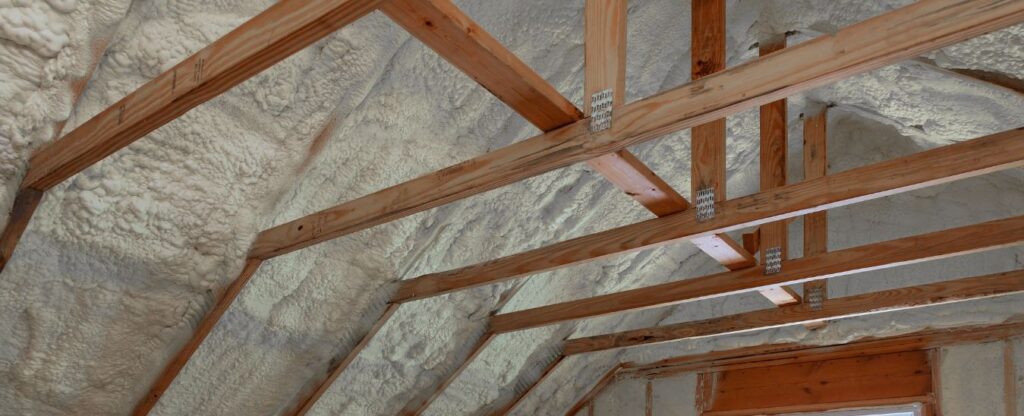As homeowners, we’re often bombarded with advice and information about maintaining and improving our homes. Regarding attic insulation, there’s no shortage of myths and misconceptions floating around. Separating fact from fiction can be daunting, from insulation materials to installation techniques. This comprehensive guide’ll debunk some of the most common attic insulation myths, empowering you to make informed decisions about your home’s energy efficiency and comfort.
What are the misconceptions about attic insulation?
Let’s have a look at the attic insulation misconceptions that people have:
Myth 1: All insulation materials are created equal.
Fact: There is a wide variety of insulation materials available on the market, each with its own unique properties and benefits. Common types include fiberglass, cellulose, spray foam, and mineral wool. While all insulation materials are designed to reduce heat transfer, their effectiveness can vary depending on factors such as R-value, installation quality, and suitability for the application. Consulting with a professional insulation contractor can help you determine the best material for your needs and budget.
Myth 2: Adding more insulation is always better.
Fact: While it’s true that increasing the amount of insulation in your attic can improve energy efficiency, there is a point of diminishing returns. Adding excessive insulation beyond recommended levels can actually be counterproductive and may lead to issues such as moisture buildup, poor ventilation, and reduced indoor air quality. It’s important to strike the right balance between insulation thickness and ventilation to ensure optimal performance and prevent potential problems down the line.
Myth 3: Insulation alone will solve all of your energy efficiency problems.
Fact: While proper insulation is a crucial component of an energy-efficient home, it’s just one piece of the puzzle. Other factors, such as air sealing, ventilation, and HVAC efficiency, also play significant roles in overall energy performance. Neglecting these aspects can undermine the effectiveness of insulation and result in wasted energy and higher utility bills. A comprehensive home energy audit can identify areas for improvement and help you develop a holistic approach to energy efficiency.
Myth 4: Insulation installation is a DIY-friendly project.
Fact: While some homeowners may attempt to install insulation themselves as a cost-saving measure, it’s not a task to be taken lightly. Proper insulation installation requires knowledge, skills, and specialized equipment to ensure effective coverage and performance. Mistakes such as inadequate sealing, compression of insulation material, and improper ventilation can compromise the integrity of your home’s thermal envelope and lead to issues like air leaks, moisture problems, and decreased comfort. Hiring a qualified insulation contractor is the safest and most reliable option for achieving optimal results.
Myth 5: Insulation is only necessary in cold climates.
Fact: While insulation is commonly associated with cold weather climates, it’s equally important for homes in warmer regions. In hot climates, insulation helps keep indoor spaces cool by preventing heat transfer from the attic to the living areas below. Proper attic insulation can significantly reduce the workload on your air conditioning system, lower energy consumption, and improve indoor comfort year-round. Additionally, insulation acts as a barrier against moisture intrusion and helps protect against mold growth and structural damage.
Myth 6: Insulation is a one-time investment with no need for maintenance.
Fact: Insulation, like any other component of your home, requires regular maintenance and upkeep to ensure long-term performance and durability. Over time, recycle insulation can settle, become compressed, or develop gaps and voids, diminishing its effectiveness. Periodic inspections by a qualified professional can identify potential issues and allow for timely repairs or replacements as needed. Additionally, maintaining proper attic ventilation is essential for preventing moisture buildup and preserving the integrity of your insulation.
Myth 7: Insulation is only necessary for older homes.
Fact: While it’s true that older homes often have inadequate insulation due to outdated building codes and construction practices, even newer homes can benefit from insulation upgrades. Building codes and energy efficiency standards have evolved over time, and what was considered adequate insulation a decade ago may no longer meet current requirements. Additionally, changes in occupancy, home additions, and renovations can alter the thermal characteristics of a home, necessitating adjustments to insulation levels to maintain optimal comfort and energy efficiency.
Myth 8: Insulation is only for attics.
Fact: While attics are a common location for insulation, they’re not the only area of your home that can benefit from proper insulation. Wall cavities, floors, basements, and crawl spaces are all potential areas where insulation can be installed to improve energy efficiency and comfort. Each area may require different types of insulation materials and installation techniques based on factors such as moisture exposure, accessibility, and structural considerations. A comprehensive home energy audit can identify areas of heat loss and recommend insulation solutions tailored to your home’s specific needs.
Myth 9: Insulation is only important for reducing heating and cooling costs.
Fact: While insulation certainly plays a significant role in reducing heating and cooling costs by minimizing heat transfer through the building envelope, its benefits extend beyond energy savings. Proper insulation also enhances indoor comfort by maintaining more consistent temperatures throughout your home, reducing drafts, and minimizing temperature extremes. Additionally, insulation helps dampen sound transmission between rooms and from external sources, creating a quieter and more peaceful living environment. Investing in quality insulation can improve the overall livability and value of your home.
Myth 10: Insulation installation is a one-size-fits-all process.
Fact: Every home is unique, with its own set of challenges and considerations when it comes to insulation installation. Factors such as climate, building design, construction materials, and homeowner preferences all influence the selection and installation of insulation products. A one-size-fits-all approach to insulation may lead to suboptimal results and missed opportunities for energy savings and comfort improvements. Working with a knowledgeable insulation contractor who takes the time to assess your home’s specific needs and develop a customized insulation plan is essential for achieving the best possible outcomes.
In conclusion, debunking common attic insulation myths is essential for making informed decisions about your home’s energy efficiency and comfort. By separating fact from fiction and understanding the principles of effective insulation, you can optimize your attic space for maximum performance and savings. Whether you’re considering an insulation upgrade or simply looking to improve your home’s energy efficiency with spray foam insulation, consulting with a trusted insulation contractor is the first step towards achieving your goals. Don’t let misconceptions stand in the way of a more comfortable, energy-efficient home—empower yourself with knowledge and take control of your attic insulation today.
Connect with Attic pros insulation removal contractor today and get your attics cleaned with expert soultions.

